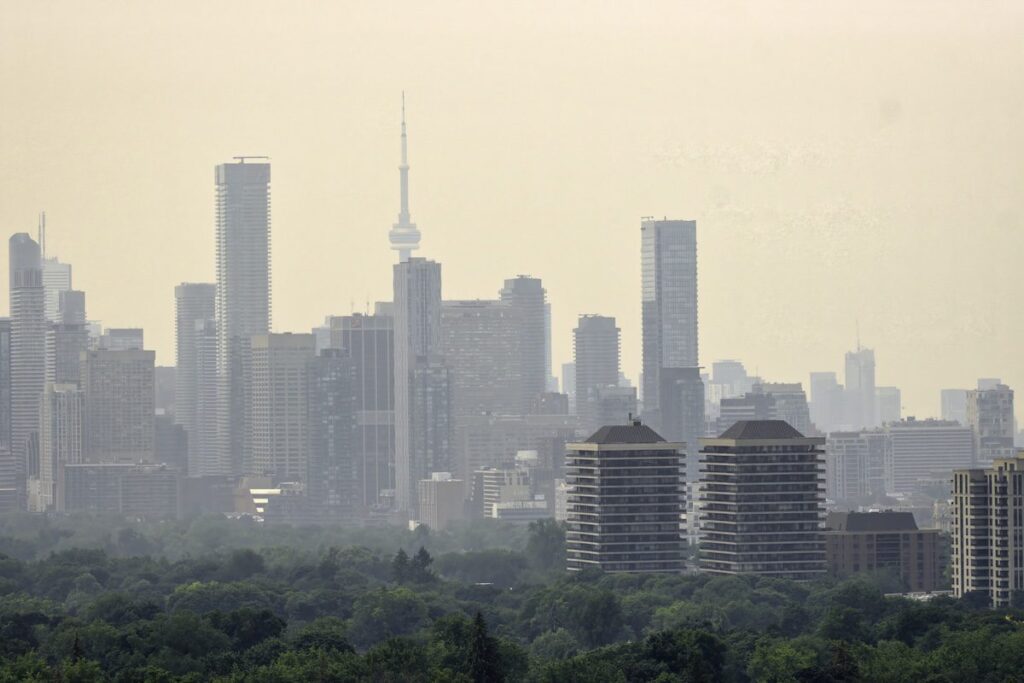On a troubling Monday morning, residents of Toronto were met with alarming news: the city ranked as having the second-worst air quality among major global cities, trailing only Baghdad, Iraq. With an Air Quality Index (AQI) reading of 177—far exceeding the “very bad” threshold of 150—the air quality was classified as “unhealthy” and “high risk.” Such rankings are disconcerting for a city proud of its vibrant lifestyle and outdoor activities.
The root cause of this environmental distress stems from over 100 wildfires currently ablaze in Manitoba. This situation has prompted a state of emergency in the province, necessitating the evacuation of numerous residents. The drifting smoke, densely packed with fine particulate matter (PM2.5), has been steadily spreading across southern Ontario, affecting areas as far as Ottawa-Gatineau and Quebec. Notably, Montreal recorded an AQI of 138, placing it sixth globally for air quality problems.
The Dangers of Poor Air Quality for Runners
For running enthusiasts, the impact of this unhealthy air quality is particularly acute. Engaging in physical activity outdoors—especially running—can lead to immediate discomfort, such as irritated eyes, a scratchy throat, and shortness of breath. Runners naturally inhale more air than ordinary pedestrians, making them particularly susceptible to the harmful airborne particles present in polluted environments.
Even if one isn’t feeling any immediate physical discomfort during a run, the inhalation of pollutants can have long-term repercussions. Prolonged exposure to poor air quality has been linked to decreased lung function, an increased risk of respiratory infections, and a range of other serious health complications.
Guidelines: Should You Go for That Run?
According to an air quality statement issued by Environment Canada for regions including Hamilton and its surroundings, the advisory is clear: if you must be outdoors, it’s advisable to wear a properly fitting, respirator-type mask, such as a NIOSH-certified N95. While this offers some level of protection against fine particulates in the smoke, many runners find that exercising with a mask can be uncomfortable, especially during warmer weather. Lower-grade masks may filter out larger particles but fall short in stopping PM2.5.
Consequently, indoor alternatives like the treadmill, indoor cycling, or swimming are excellent substitutes for outdoor runs. This might also be a superb opportunity to focus on strength training or even experiment with high-intensity interval training (HIIT) routines for endurance and strength development. Diversifying your workout routine can help maintain fitness levels without compromising health.
Understanding Air Quality Levels
For runners and outdoor enthusiasts, comprehending the AQI is crucial. Here’s a breakdown:
- AQI below 50: Green/Good—Safe conditions for outdoor activities.
- AQI between 50 and 100: Yellow/Moderate—Conditions are generally safe for healthy individuals but may be unhealthy for sensitive groups.
- AQI between 100 and 150: Orange/Poor—Unhealthy for sensitive groups and others should consider limiting outdoor activity.
- AQI over 150: Red/Very Poor—This level is unhealthy for everyone, and all outdoor activities should be avoided.
Health Comes First
While it may feel daunting to miss out on outdoor runs, the potential health risks associated with exercising in poor air quality significantly outweigh the physical benefits. Unlike traditional running gear, our lungs can’t be easily replaced. Under current conditions, the negative effects of pollutants are likely to overshadow any immediate gains in cardiovascular health. Protecting your respiratory health today will pay dividends in the long run.
In conclusion, it is vital for residents of affected areas to remain vigilant about air quality and adjust their exercise routines accordingly. The challenges posed by climate change and environmental hazards are real, and our health should always be the top priority. Consider tuning in to local air quality reports and listen to guidance from health officials to safeguard both your well-being and your fitness journey.
